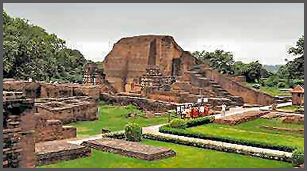Renaissance Reizen (I) Pvt. Ltd
Recognised by Department of Tourism, Government of India
East India Travel
 The north eastern region of India constitutes five states and two union territories. It is the least explored region of India for various reasons which include the infrastructure, special permits and sensitivity of the of the whole region. The area is dominated by the tribes speaking many different languages and dialects. These states and union territories border with Myanmar, Bhutan, China and Bangladesh and connect rest of the India through Siliguri corridor.
The north eastern region of India constitutes five states and two union territories. It is the least explored region of India for various reasons which include the infrastructure, special permits and sensitivity of the of the whole region. The area is dominated by the tribes speaking many different languages and dialects. These states and union territories border with Myanmar, Bhutan, China and Bangladesh and connect rest of the India through Siliguri corridor.
The snow capped mountains of Arunachal Pradesh bordering China (Tibet), Bhutan and Myanmar on its three side, offers a breath-taking spectacle of Nature's glory in a wild profusion of flora, fauna and people abounding in a variety of tribal customs, culture, language and dresses. It is a treasure hunt for historians, anthropologists and archaeologists. Meghalaya, the 21st state of the Indian Union with an area of 22,429 sq. km, tucked away in north eastern region, it borders Bangladesh in south. Meghalaya boats of 300 rare species of orchids as well as wildlife. The people are pre-dominantly Garos, belonging to the Bodo family of the Tibeto-Burman race, said to have migrated from Tibet. Shillong, the capital of MeghalayaMeghalaya is a a beautiful nature's gift at an altitude of 1496 mt. Mizoram, a mountainous region became the 23rd state of Indian Union in February 1987 and is sandwiched between Mynamar in the east and the south and Bangladesh and Tripura in the west with its northern frontier touching Assam and Manipur. The state has an area of 21081 sq km. The majority of the Mizos are Christian by faith with a very high literacy rate of 88.06 percent. Tripura, with an area of 10,500 sq km is inhabited by 19 tribes. The state is bounded on the north, west, south and south-east by the international boundary of Bangladesh. 60 percent of the total area is under hills and forests. The princely state, pollution free echo-friendly environment has beautiful Royal Palace, Neemmahal built in early 20th century. Assam, the largest and most easily accessible of the north-east states, Assam grows 60 percent of India's tea and produces a large proportion of India's oil as well. The capital of the state, Guwahati is connected on air-route with Delhi, Calcutta and Bagdogra. Assam's major attraction of the permitted areas is Kaziranga wildlife sanctuary, most famous for one horned rhinos.
 Nagaland, the land of Nagas covering an area of 16,572 sq km lies to the south east of Assam and borders Burma. There are about 16 major Tibeto-Burmese tribes in Nagaland collected referred to by the generic term "Naga". About 90 percent of the people are Christians, and they belong mainly to the American Baptist Mission. Kohima, the capital is situated at 1500 mt above sea level and is one of the prettiest centres of the north east. Manipur, 22356 sq km extending to the south of Nagaland was formerly a princely state. The Meiteis of Tibeto-Burmese origin, who live in the valleys form 60 percent of the population and are follower of Hinduism. The state is rich in culture, dances, martial art, drum dance, spear dance. Imphal, the capital, stands right in the middle of the state. It is the nerve centre of all cultural, commercial and political activities.
Nagaland, the land of Nagas covering an area of 16,572 sq km lies to the south east of Assam and borders Burma. There are about 16 major Tibeto-Burmese tribes in Nagaland collected referred to by the generic term "Naga". About 90 percent of the people are Christians, and they belong mainly to the American Baptist Mission. Kohima, the capital is situated at 1500 mt above sea level and is one of the prettiest centres of the north east. Manipur, 22356 sq km extending to the south of Nagaland was formerly a princely state. The Meiteis of Tibeto-Burmese origin, who live in the valleys form 60 percent of the population and are follower of Hinduism. The state is rich in culture, dances, martial art, drum dance, spear dance. Imphal, the capital, stands right in the middle of the state. It is the nerve centre of all cultural, commercial and political activities.
Free Travel Plan Suggestion - Ask for a Quote for FREE |
Renaissance Reizen (I) Pvt. Ltd., recognised by Govt. of India, Ministry of Tourism.
Renaissance Reizen is a proud member of - Indian Association of Tour Operators (IATO), Pacific Asia Travel Association(PATA) and
TAAI (Travel Agents Association of India).
Site Developed & Promoted by Advent InfoSoft Pvt Ltd.





